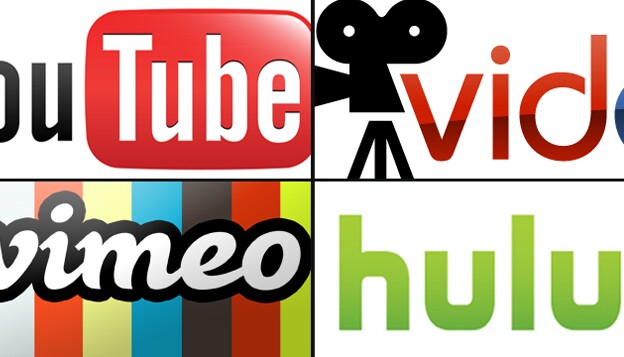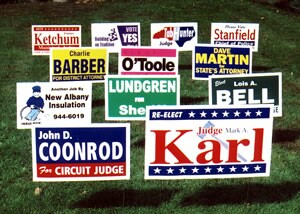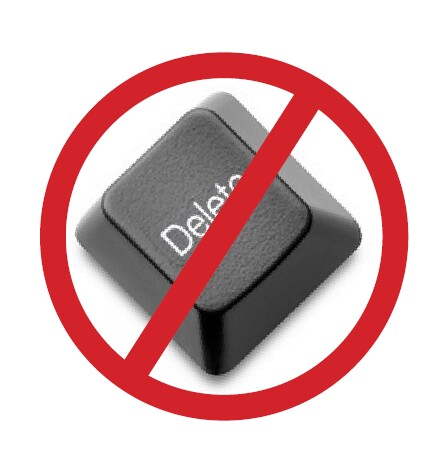 I saw a video over the holidays and it got the better of me so much so that I have to say something because these types of videos just need to stop being created by “marketers.”
I saw a video over the holidays and it got the better of me so much so that I have to say something because these types of videos just need to stop being created by “marketers.”
I’m talking about poorly conceived and produced online videos that we find on countless company websites and social media channels which are completely ineffectual. You know the kind of video I’m talking about: it starts off looking like it was homemade and it never gets better; the on-camera ‘talent’ has none; it doesn’t know when to end; there’s an information overload going on which leads to boredom; no clear understanding of who the audience is; and most importantly, the “WOW factor” is completely hidden or missing.
Unfortunately, this is exactly what some companies have haphazardly slapped together in the name of “meaningful content video.”
As we all know, online video content has just exploded over the past couple of years and it’s going to keep getting bigger in the foreseeable future. For example, did you know….
Yet we still have too many companies that create and post videos which are visual train-wrecks that unfortunately their customers and prospective customers will see. With that in mind, and so that the next video you develop has a chance to be all that it can be, let’s talk about what good videos have in common:
So whether you’re creating a testimonial, promotional, “how-to” or other type of video, the idea is to make sure that people find it interesting, worth spending the time to watch and that it leads to the desired next step. Repeated viewings of your video generally indicates a positive overall experience. Repeatedly having your video, or future videos, being ignored means, well, you know what that means.
“Be interesting, be enthusiastic…and don’t talk too much.” – Norman Vincent Peale
 Like you, I’ve given companies, associations, causes, etc., permission to send me information on topics, product information and promotional offers. I knew going into this that some of these companies would be smart enough to know how to market online to their permission-based group and others wouldn’t have a clue. And I’ve been right on both counts.
Like you, I’ve given companies, associations, causes, etc., permission to send me information on topics, product information and promotional offers. I knew going into this that some of these companies would be smart enough to know how to market online to their permission-based group and others wouldn’t have a clue. And I’ve been right on both counts.
Permission-based marketing is now at the heart of relationships between companies and their customers and prospects. People opt-in to receive your emails, “Like” your company on Facebook, subscribe to your website’s RSS feed or your You Tube channel, or follow you on Twitter or LinkedIn. But having permission to market to someone isn’t a license to bombard them with marketing messages.
In fact, not knowing when to “zip it” is a classic marketing mistake that too many marketing people make. If marketing is about building relationships with customers, over-marketing is the best way to kill the relationship and send the customer or prospect heading for the door. Just recently, yesterday to be exact, I came across a really interesting study entitled “The Social Breakup” prepared by ExactTarget, a company that provides clear evidence of what happens to customer relationships when the marketer comes on too strong:
Guess the biggest reason people break up with companies? (Drum roll)…Too much marketing. The study showed that:
On that note, let me tell you a quick story about an industry association I did some freelance consulting for. Within their business specialty, they were the largest association in the country but people were increasingly not renewing their membership. After talking to the marketing department and executive management, two recommendations were made: 1) Cut in third the number of emails and direct mail pieces that were being sent out; 2) Find out why people were not renewing. Well, they didn’t like the first recommendation but did ‘humor’ me by taking my advice about doing the research. When the member survey report was finalized it said that the #1 reason for members not renewing was a direct result of their being really bothered by the sheer number of emails they were receiving. Guess what the association did? They disregarded the research and went back to doing what they were doing…no lie!
So, how do you know when you’re over-marketing and about to kill a customer or prospective relationship? It can be a fine line, but here are some principles to guide your marketing planning to avoid this costly error.
At the end of the day, people opt in because they want to hear from you. But if you disrespect the relationship by coming on too strong, customers and prospects will flee. Treating your customers and prospects well is common courtesy; treating their permission to market to them as a gift is even better…it’s a smart marketing strategy. Have a wonderful holiday season.
 I’m so glad it’s over. Probably like you, my home phone was being called at an increasing rate the closer that we got to Election Day. Candidate faces and names were everywhere and on everything from direct mail to lawn signs, outdoor boards to TV and radio commercials. As annoying as it was, there were a number of messaging strategies and tactics that caught my attention because they were executed exceedingly well, which we as marketers should consider adding to our communication toolkits for use tomorrow, next week or next month. For as we all know, your customer and prospects are still being bombarded with marketing messages each and every day by both you and your competitors.
I’m so glad it’s over. Probably like you, my home phone was being called at an increasing rate the closer that we got to Election Day. Candidate faces and names were everywhere and on everything from direct mail to lawn signs, outdoor boards to TV and radio commercials. As annoying as it was, there were a number of messaging strategies and tactics that caught my attention because they were executed exceedingly well, which we as marketers should consider adding to our communication toolkits for use tomorrow, next week or next month. For as we all know, your customer and prospects are still being bombarded with marketing messages each and every day by both you and your competitors.
So let me share with you some strategies and tactics used by politicians leading up to November 6th that are worth remembering.
1) Understand the takeaway
Truth is, these folks do have some things to teach us marketers, particularly regarding messaging. They see the world a bit differently than we do, and use techniques most people didn’t learn in school or on the job, such as: It’s Not What You Say, It’s What People Hear. You can have the best message in the world, but the person on the receiving end will always understand it through the prism of his or her own emotions, preconceptions, prejudices, and existing beliefs. We focus too much of our energy on finding the best way to sell our message, and too little on understanding the filters consumers have as we deliver it. Political marketers care more about takeaways than inputs.
2) Make it look good
Have you seen the biographic videos produced by the two Presidential candidates? They were extraordinarily well done. A number of other political ads were also well done from a storytelling and video perspective. They stayed on message knowing the one critical point (not 4 or 5 points) that they want to make sure was communicated. The videos were shot and narrated well. They didn’t hire amateurs to do their work but had expert writers and producers creating the content. Like with your business, there’s too much at stake to do cheap stuff because everyone knows what cheap means. People interpret what your company/brands stands for based on the quality of creative and the media channel it’s presented on. Don’t go out until you look good.
3) Be the genuine article
Business marketing sometimes seems to stretch the truth a bit too much. When marketing messages are sufficiently public and sufficiently wrong, the press will get wind and call you on the truth of your marketing. Transparency of your brand could never be more important. It is less about giving the appearance of perfection and more about being genuine and human as we build relationships. While it’s critically important to tell your story and the benefits of your product or service, it’s not fine to lie about them. My mom use to tell me “Lies have short legs.” Meaning, you can’t outrun the truth …so don’t stretch it very far.
4) You are who you say you are
In the world of politics, I would argue that there’s nothing as important as branding and having people recognize what the brand stands for. Brand consistency is always maintained. Unlike politicians, too many companies struggle with this, swinging wildly from one branding concept to another. Everything from the taglines, to the logos, to the visuals has been choreographed beautifully. Get your branding figured out right now. Here are a few questions to ask yourself to determine if your branding is clear:
5) Be social..not antisocial
Politicians don’t just post stuff to their respective Twitter or Facebook accounts and hope people will read it. Rather, they actually engage with their social media audience. They post images and video. They have their immediate families and supporters use social media regularly. How is your company using social media to spread the good word about your company? I’ll be the first to say that spending a lot of time, money and resources on social media is not right for every company, maybe even yours, but without some presence, you’re letting the competition become more visible and be seen as a legitimate business partner at your expense.
6) Telling the story again and again
Why are some political ads annoying? Some of it is the content, but I think most of the annoyance is the quantity of political advertising as elections draw near. But politicians know one thing: without a communications budget that allows you to be out in the market in a way that shows you’re “a player”, you won’t get the job done. Far too many companies who do ‘invisible marketing’ base their companies short and long term success on thinking that customers will pick them over a brand that’s actively marketing and better known. The takeaway is that repetition is key …but too much repetition annoys.
As I said earlier, I’m glad the madness of the political advertising season is over but I’m grateful to have learned a few things because each and every day customers and prospects are voting who they want to do business with. Let the winner be you.
by Rolf Gutknecht, Agent of Change (c) 2012
I’m not sure about you, but in the deluge of emails that comes my way each and every day, it’s real easy start deleting them without even thinking about whether there’s content that might make my life and that of my clients easier and better. So, I stopped doing that about  6 months ago and now take the time to open each one and at the very least scan for interesting info. Maybe I’ll see something about trends, or research data, facts, or a tidbit about helpful hints. Without doing so, I’d miss out on stuff I should know about and, respectfully said, that’s probably the case with you as well.
6 months ago and now take the time to open each one and at the very least scan for interesting info. Maybe I’ll see something about trends, or research data, facts, or a tidbit about helpful hints. Without doing so, I’d miss out on stuff I should know about and, respectfully said, that’s probably the case with you as well.
Well, with your indulgence, I wanted to share with you 10 pieces of information that you may not be aware of which in turn will help you grow your business by seizing on untapped revenue-producing opportunities. So, here goes:
As I said, it’s easy to delete a bunch of good information that comes your way because of time constraints, being short staffed or being overwhelmed with email after email. But this is all good information that I received and looked over before I hit the delete key. If you’ve read this far, you’ve made the same thoughtful decision as well.
by Rolf Gutknecht, Agent of Change (c) 2012
 The GPS is a wonderful invention for anyone who’s had to get somewhere they’ve not been before. Whether you get directions from your SmartPhone, Mapquest, Google Maps, dedicated GPS device or even the old paper map, there are only two pieces of data to plot your route: where you are now and where you want to go. Sounds pretty simple, right? Yet how many companies, maybe even yours, have launched into a marketing campaign without really considering these things! Unfortunately, not having a clear picture of where you are now and where you want to go leads to not getting anywhere because one critical factor is missing: a overall marketing strategy.
The GPS is a wonderful invention for anyone who’s had to get somewhere they’ve not been before. Whether you get directions from your SmartPhone, Mapquest, Google Maps, dedicated GPS device or even the old paper map, there are only two pieces of data to plot your route: where you are now and where you want to go. Sounds pretty simple, right? Yet how many companies, maybe even yours, have launched into a marketing campaign without really considering these things! Unfortunately, not having a clear picture of where you are now and where you want to go leads to not getting anywhere because one critical factor is missing: a overall marketing strategy.
Time and time again in speaking with CMO/VP/Directors of Marketing for companies large and small, they tell me that they need to execute marketing programs, but then tell me they “don’t have time to develop a full strategy.” I’m not kidding. It’s actually easy to understand, given all the exciting marketing tools available today, including social media, email marketing, location-based apps, etc. It’s easy to confuse these tactics with strategies. Too often I see people focused on the newest and sexiest marketing tactic du jour without any appreciation for how it fits in an overall marketing strategy. I’ve also seen entire marketing plans that consist of nothing but a series of tactics strung together one after the next without an over-arching marketing strategy.
So, what’s the difference between strategy and tactic? A strategy is the broad roadmap that defines where you are now, where you want to go and how you’ll get there – taking into account your product or service, what the competition is doing, which direction the market is heading, and what you’ll need to do and say that gives your company the competitive edge. It’s the big picture. Tactics, by contrast, are the specific tools you use to do this: Write a blog. Send out a newsletter. Develop an app. Run an ad. Be more visible at tradeshows. Etc.
It’s easy to start with the “how” but if you haven’t identified the “what”, you may find yourself spending a lot of time executing tactics that don’t take you where you want to go and in so doing, you’ll be wasting time, resources and losing out on sales-producing opportunities.
The confusion compounds when I hear some marketing folks talk about their organization’s “online marketing strategies” given all the attention to social media, online and mobile tools. You shouldn’t have an “online” or internet marketing strategy any more than an you should have an “offline” strategy. What you do need is one, single integrated strategy that looks across all delivery platforms whether online or offline, print, broadcast, or mobile. Your customers don’t have an online self and offline self and neither should you. Think holistically about all your marketing initiatives. Otherwise you’ll drive your customers and your own team crazy.
So at the end of the day, executing marketing tactics without having a well-developed integrated strategy is like leaving your roadmap tools at home and taking off on the drive without concerning if you’ve chosen the right road, highway or turnoff. You wouldn’t haphazardly set off on an important trip in your personal life so why let it happen with regard to your company’s marketing activities. You’ll never make it to the right place taking the wrong roads.